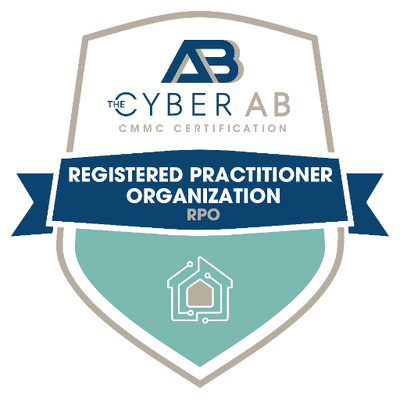As a program manager, you understand how important FedRAMP training is for personnel: It’s crucial for ensuring that your organization meets the rigorous security requirements mandated by the Federal Risk and Authorization Management Program (FedRAMP).
On an intellectual level, this is easy to understand. But when leadership sees associated costs like time, budget, and manpower, you could encounter a serious lack of support or worse, outright pushback.
Let’s talk about why different aspects of FedRAMP training are critical for your organization and best practices for how to go about the process.
Learn more: How to Achieve FedRAMP Compliance
FedRAMP Training, a High-Level Overview
As the saying goes, you are only as strong as your weakest link. It is therefore important to ensure that everyone goes through a security and awareness training (AT) program.
A learning management solution (LMS) needs to be established as well, either as a solution developed in house, or from an established vendor.
Specific role-based training should be implemented for each privileged and non-privileged role accessing the federal environment, and those training records need to be maintained.
In general, requirements to meet FedRAMP Authority to Operate (ATO) compliance is also good guidance for security within a corporate environment.
Let’s go into more detail and discuss how to implement successful FedRAMP training within your organization.
Learn more: Achieving FedRAMP Compliance: The Beginner’s Guide to Authorization
Security Awareness Training, in Brief
With cyberattacks on the rise, security awareness training should be part of new employee onboarding anyway. Initial training needs to be implemented for all levels and roles for the system environment, including the system owner, chief information security officer (CISO), developer, part-time personnel or contractor accessing the environment.
Basic security training modules should include phishing, whale phishing (spear phishing for the executive level), and insider threat. The complete list of examples can be found in AT-2. The completion of insider threat training is required by all personnel within the Federal environment.
Specifically, the insider threat training should include how to recognize it and through what channels to report potential behavior. In addition to initial security and awareness training, education should be provided with system changes, and on at least an annual basis.
FedRAMP Training: Understanding Requirements
Understanding FedRAMP requirements is the first step to training your team. What is FedRAMP? What is the program’s goal? What does it require from your team?
Learn more: Decoding FedRAMP Baselines: Get to Know Low, Moderate, and High-Impact Levels for Compliance
Here are some important points that your training materials should cover. These should also provide cues for the direction of your training program.
- Foundation for Compliance: FedRAMP sets out stringent requirements, controls, and guidelines for cloud service providers (CSPs) aiming to work with the U.S. government. Familiarizing yourself with these requirements lays the foundation for building a compliance strategy and training program that aligns with the expectations of FedRAMP.
- Comprehensive Knowledge: FedRAMP requirements cover various aspects of security, including access control, data encryption, incident response, and continuous monitoring. This knowledge is essential for developing training materials and educating your team on their roles and responsibilities in maintaining compliance.
- Risk Management: FedRAMP places a strong emphasis on risk management and mitigation strategies to protect federal information systems. Understanding the risk management framework outlined by FedRAMP enables you to identify potential security risks and vulnerabilities within your organization’s infrastructure and address them proactively. Training your team on risk assessment and mitigation techniques is essential for maintaining a secure and compliant environment.
- Legal and Regulatory Compliance: Compliance with FedRAMP is not just a matter of best practices; it’s also a legal and regulatory requirement for CSPs handling federal data. Failure to comply with FedRAMP requirements can result in penalties, loss of contracts, and damage to your organization’s reputation. Therefore, it’s crucial to have a thorough understanding of the legal and regulatory implications of FedRAMP compliance and ensure that your team is well-informed and prepared to meet these obligations.
Identify FedRAMP Training Needs
Identifying training needs is a critical step in preparing your team for FedRAMP compliance. It involves assessing your team’s current knowledge, skills, and capabilities related to security and compliance, and identifying any gaps that need to be addressed.
Here’s how to identify your team’s training needs effectively.
- Conduct Skills Assessment: Evaluate your team’s current knowledge and skills related to security and compliance through skills assessments, surveys, or interviews. This process can help identify areas where your team excels and areas where improvement is needed.
- Review Previous Incidents or Audits: Analyze past security incidents, audit findings, or compliance assessments to identify recurring issues or areas of weakness. These insights can help pinpoint specific areas where additional training may be necessary to prevent future incidents or improve compliance posture.
- Consult Subject Matter Experts: Engage with subject matter experts within your organization or seek external guidance to assess your team’s proficiency in key areas of FedRAMP compliance. These experts can provide valuable insights into the skills and knowledge required to meet FedRAMP requirements effectively.
- Review FedRAMP Requirements: Refer to the FedRAMP documentation, including the Security Assessment Framework (SAF) and Security Controls Baseline, to understand the specific knowledge and skills required for compliance. Compare these requirements to your team’s current capabilities to identify any gaps that need to be addressed.
By systematically identifying your team’s training needs, you can develop a targeted and effective training program that equips your team with the skills and knowledge needed to achieve and maintain FedRAMP compliance. This proactive approach enhances your organization’s security posture and reduces the risk of compliance violations.
Role-Based Security Training
Training should be customized to job roles within the information system. For example, a database administrator should have different training than personnel who oversees auditing and incident response.
Tailoring training to roles within your organization is crucial for effectively preparing your team for FedRAMP compliance. Here’s why it’s important and how you can go about it.
- Relevance and Context: Different roles within your organization have varying levels of involvement in the compliance process and interact with FedRAMP requirements in different ways. By tailoring training to specific roles, you can ensure that team members receive training that is relevant to their responsibilities and provides context for how compliance requirements apply to their daily tasks.
- Efficiency and Effectiveness: Training programs that are tailored to specific roles are more efficient and effective because they focus on the knowledge and skills that are most relevant to each role. Rather than providing generic training that may not fully address the needs of individual team members, customized training programs enable you to deliver targeted content that meets the specific requirements of each role.
- Engagement and Motivation: When training is directly applicable to an individual’s role, they are more likely to be engaged and motivated to learn. Tailored training programs demonstrate to team members that their roles are valued, and that the organization is invested in their professional development. This can lead to higher levels of participation, retention, and application of knowledge in real-world scenarios.
- Risk Mitigation: Certain roles within your organization may have greater responsibilities or access to sensitive information that directly impacts FedRAMP compliance. By providing role-specific training, you can ensure that individuals in these roles are equipped with the knowledge and skills needed to fulfill their compliance obligations effectively. This helps mitigate the risk of non-compliance and reduces the likelihood of security incidents or compliance violations.
Role-based training needs to be completed at least annually, during significant changes, or when personnel are assigned a new role. It can be specific to incident response, contingency planning, etc.
You can set up alerts to notify personnel and managers about the required training completion date. Keeping track in a manual spreadsheet will suffice.
Keep Your FedRAMP Training Records
Finally, training records must be retained for at least one year for FedRAMP moderate and five years for FedRAMP high for all personnel with access to the environment. This is because they play a critical role in ensuring that your organization is adequately prepared for FedRAMP compliance.
- Verification of Compliance: Training records serve as a means of verifying that employees have completed the necessary training to meet FedRAMP compliance standards. This verification is crucial during audits and assessments conducted by regulatory bodies or third-party assessors. By maintaining detailed training records, your organization can demonstrate its commitment to compliance and reduce the risk of non-compliance penalties.
- Identification of Training Gaps: By reviewing training records, you can identify any gaps in your organization’s training program. For example, if certain employees consistently fail to complete required training modules or if there are recurring deficiencies in specific areas of knowledge, this may indicate the need for additional training initiatives or adjustments to existing training materials.
- Tracking Progress and Effectiveness: Training records allow you to track the progress of individual employees as they complete various training activities. This information can help you assess the effectiveness of your training program and identify areas for improvement. For example, if certain employees struggle to pass assessments related to FedRAMP compliance, you may need to revisit the training materials or provide additional support to ensure comprehension.
- Evidence of Due Diligence: Maintaining comprehensive training records demonstrates due diligence on the part of your organization in terms of compliance efforts. In the event of a security incident or data breach, having documentation that shows employees received proper training can help mitigate potential liability by demonstrating that your organization took reasonable steps to prevent such incidents.
- Continual Improvement: Training records provide valuable data that can inform ongoing efforts to improve your organization’s training program. By analyzing trends in training completion rates, performance on assessments, and feedback from employees, you can identify opportunities to enhance the effectiveness and relevance of your training initiatives over time.
FedRAMP Training: Wrapping Up
38North Security can help you evaluate and improve your security awareness training processes so that you can achieve compliance and enhance security awareness. Get in touch with us today.




